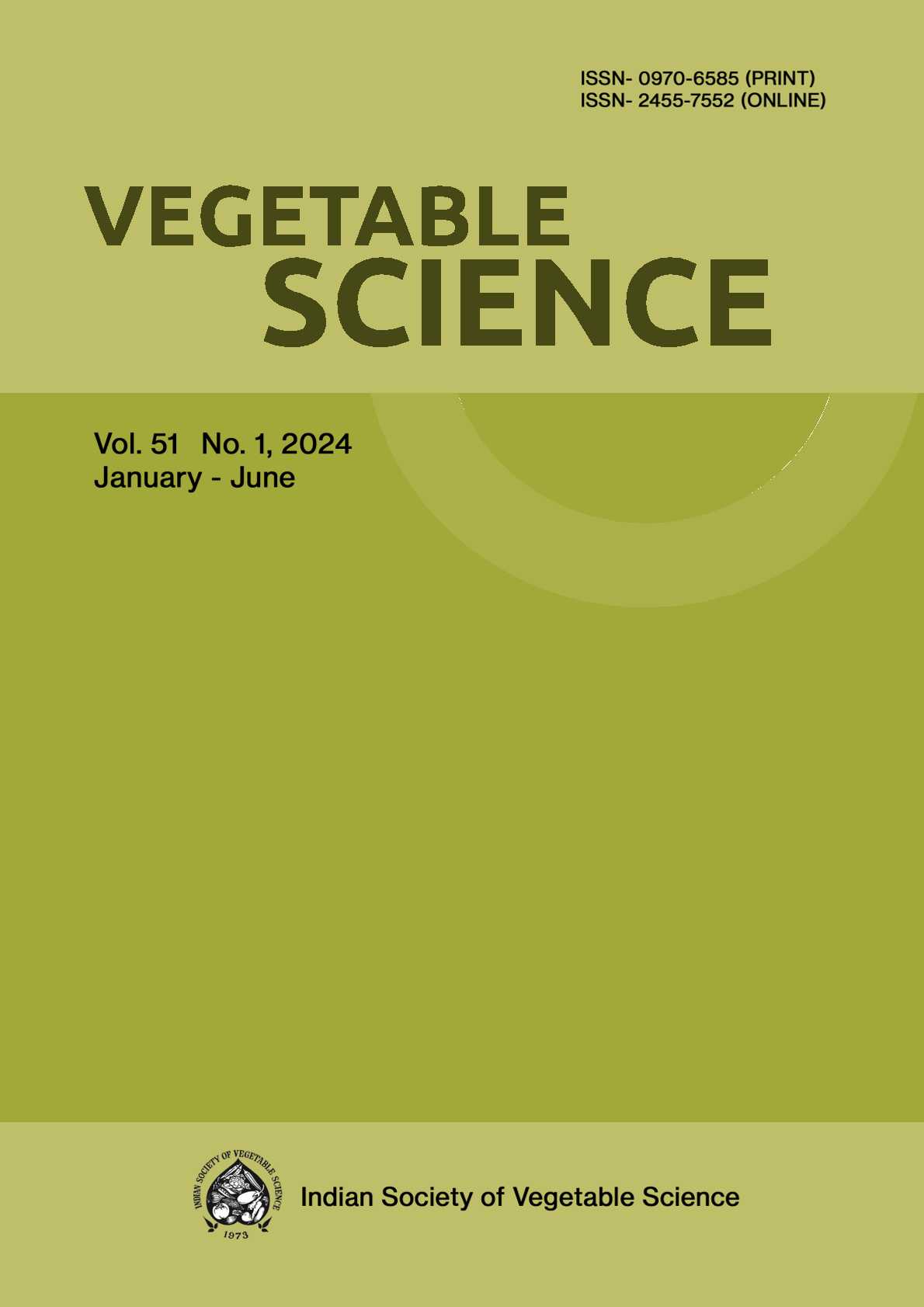Studies on gene action expression of yield and yield related traits of brinjal (Solanum melongena L.)
DOI:
https://doi.org/10.61180/vegsci.2020.v47.i1.22Keywords:
.Abstract
Brinjal (Solanum melongena L.) is one of the most
important solanaceous vegetable crop of sub-tropics and
tropics having diploid chromosome number 2n=2x=24.
It is a versatile crop adapted to different agro-climatic
regions and can be grown throughout the year. India is
regarded as the primary centre of origin/diversity of brinjal
(Bhaduri 1951 and Vavilov 1931). In India, brinjal
occupies an area of 6.69 lakh hectare with estimated
annual production of 12.4 million tonnes in 2016-17. In
Uttar Pradesh, brinjal is being cultivated on an area of
7.83 thousand ha with annual production of 0.269 million
tones (NHB 2016-17). Brinjal has Ayurvedic medicinal
properties. It has also been recommended as an excellent
remedy for liver complaints and diabetic patients (Tiwari
et al. 2009). White brinjal is good for diabetic patients.
Being rich in fiber, potassium, vitamin B-6 and
phytonutrients like flavonoids
Downloads
Published
Issue
Section
License

This work is licensed under a Creative Commons Attribution-NonCommercial-NoDerivatives 4.0 International License.






